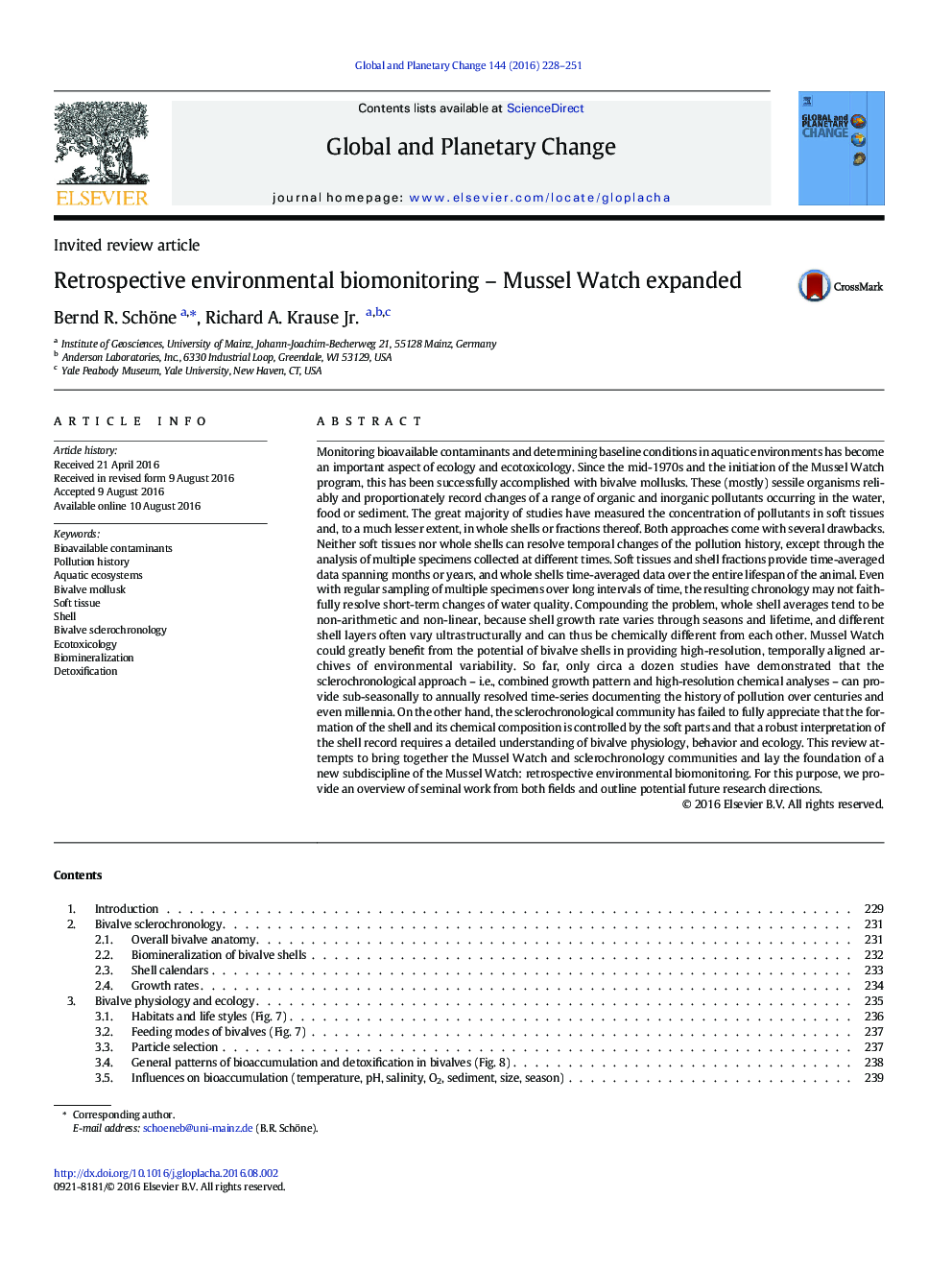| Article ID | Journal | Published Year | Pages | File Type |
|---|---|---|---|---|
| 4463282 | Global and Planetary Change | 2016 | 24 Pages |
•Soft-tissues and shells of bivalves serve as pollution sentinels in aquatic settings.•Soft-tissues and whole shell analyses provide time-averaged pollution data.•Uptake, accumulation and incorporation of metals in shells is highly complex.•Sclerochronological techniques enable reconstruction of contamination histories.•Shell chemistry is linked to shell ultrastructure and diagenetic loss of elements.
Monitoring bioavailable contaminants and determining baseline conditions in aquatic environments has become an important aspect of ecology and ecotoxicology. Since the mid-1970s and the initiation of the Mussel Watch program, this has been successfully accomplished with bivalve mollusks. These (mostly) sessile organisms reliably and proportionately record changes of a range of organic and inorganic pollutants occurring in the water, food or sediment. The great majority of studies have measured the concentration of pollutants in soft tissues and, to a much lesser extent, in whole shells or fractions thereof. Both approaches come with several drawbacks. Neither soft tissues nor whole shells can resolve temporal changes of the pollution history, except through the analysis of multiple specimens collected at different times. Soft tissues and shell fractions provide time-averaged data spanning months or years, and whole shells time-averaged data over the entire lifespan of the animal. Even with regular sampling of multiple specimens over long intervals of time, the resulting chronology may not faithfully resolve short-term changes of water quality. Compounding the problem, whole shell averages tend to be non-arithmetic and non-linear, because shell growth rate varies through seasons and lifetime, and different shell layers often vary ultrastructurally and can thus be chemically different from each other. Mussel Watch could greatly benefit from the potential of bivalve shells in providing high-resolution, temporally aligned archives of environmental variability. So far, only circa a dozen studies have demonstrated that the sclerochronological approach – i.e., combined growth pattern and high-resolution chemical analyses – can provide sub-seasonally to annually resolved time-series documenting the history of pollution over centuries and even millennia. On the other hand, the sclerochronological community has failed to fully appreciate that the formation of the shell and its chemical composition is controlled by the soft parts and that a robust interpretation of the shell record requires a detailed understanding of bivalve physiology, behavior and ecology. This review attempts to bring together the Mussel Watch and sclerochronology communities and lay the foundation of a new subdiscipline of the Mussel Watch: retrospective environmental biomonitoring. For this purpose, we provide an overview of seminal work from both fields and outline potential future research directions.
